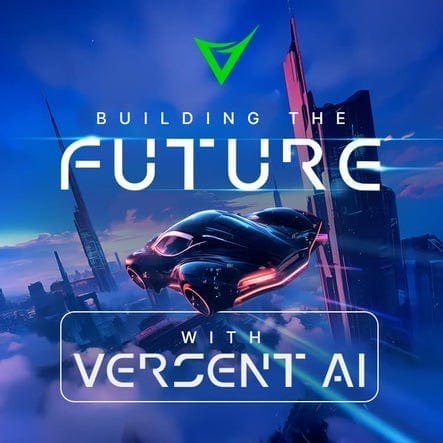Transforming IT Operations: Building an Intelligent Help Desk with AWS Strands Agents

Saniya Kolangde
AI Specialist x Tech Consultant

Saniya Kolangde
AI Specialist x Tech Consultant
How Multi-Agent Orchestration Replaced Our Broken Help Desk (And Our Keyboard-Throwing Habits)
Executive Summary
IT help desks are the unsung heroes of organizational productivity. Anyone who’s worked behind the curtain knows the reality: Tier 1s drowning in repetitive requests, engineers pulled away from meaningful projects, and tickets piling up faster than anyone can clear them.
At Versent, we wanted to change that. We set out to build an intelligent IT help desk system — not just another automation script, but something that could reason, learn, and adapt to our company’s specific needs.
Spoiler: it wasn’t easy. We wrestled with Bedrock Agents, endured more standups than we could count, and at one point I nearly threw my keyboard at the screen throwing constant errors — but I pushed through thinking “just one more API scheme tweak.”
Then came AWS Strands Agents — and the game changed. Suddenly, things started to feel… different. Lighter. Like the system actually wanted to work with us. What came out the other side wasn’t just an intelligent help desk. It was an AI-powered shift in how IT ops feel.
This post is the story of that journey: The frustration, the pivot, and the system we eventually built — a multi-agent help desk that is secure, scalable, and (finally) doesn’t make us want to throw keyboards across the room.
The Challenge: Breaking the Cycle of Inefficiency

Traditional IT help desks are stuck in a reactive loop that creates endless inefficiencies:
- Volume Overload: Tier 1 support teams spend 70–80% of their time on repetitive tasks like password resets, basic access requests, you name it.
- Knowledge Fragmentation: Docs scattered across systems mean resolution times are unpredictable.
- Resource Misallocation: Senior engineers (Tier 3/4) are constantly pulled from strategic projects to handle escalations.
- Escalation Bottlenecks: Poor ticket routing and prioritization leads to SLA breaches and frustrated users.
At Versent, we recognized the solution wasn’t just automation. We needed intelligence — agents that could reason, adapt, and learn from each interaction while respecting security and company context.
The Struggle: When Bedrock Agents Broke Us
Our first attempt was with Bedrock Agents, because on paper it seemed like a perfect fit: let an orchestrator handle tasks, integrate with tools, connect it to functions, and call it a day.
Reality? Very different.
- Orchestration felt brittle → every tweak risked breaking the flow.
- Debugging was painful → like wrestling an octopus blindfolded.
- Lambda function integration failed → bedrock refused to accept function logic
- Standups dragged on → by the fourth one in a week, morale was shot.
At some point, the team realized we weren’t building an intelligent help desk. We were building an intelligent stress machine.
That’s when we made the call: pivot to AWS Strands Agents.
The Pivot: Enter Strands Agents
When we first tried AWS Strands Agents, it was like stepping onto a smoother road after weeks of potholes. Instead of forcing a single agent to juggle everything, Strands encouraged us to think in terms of specialists:
- The Knowledge Agent → the nerd who knows where all the docs are buried.
- The Jira Ticket Agent → the admin wizard who conjures up Jira tickets when backup’s needed.
- The Ticket Triaging Agent → the taskmaster who cares about SLAs & ticket priorities
- The Bios Agent → the matchmaker who pairs tickets with the perfect expert.
- The Orchestrator Agent → the supervisor teacher who keeps everyone in tune.
And unlike Bedrock Agents, Strands didn’t fight us at every turn. Suddenly, the agents felt less like black boxes and more like tools we could actually shape. The frustration eased. Standups got shorter. The team was actually moving tickets to Done rather than to Blocked… we were making progress!
I won’t forget the first time our Strands-powered help desk auto-routed a ticket correctly and served up a contextual troubleshooting guide — all without us touching it.
There was silence. Then someone whispered: “Wait… it actually worked?”

That was the turning point. Strands wasn’t just another tool — it gave us a framework to build something production-ready.
So what exactly made Strands different? Three pillars:
- Enterprise AI Platform → orchestration of complex workflows between multiple agents with native AWS service integrations.
- Agent-as-Tool Architecture → the ability to mix native AWS integrations with custom agents, empowering agents with a broad range of capabilities.
- Rapid Deployment → smooth developer experience, seamless deployment, and end-to-end evaluation plus versioning and rollbacks baked in.
Together, these pillars made our system scalable, reliable, and truly enterprise-ready.
The Multi-Agent Orchestration in Action

Now that we’ve introduced the agents, let’s walk through how the system actually works in practice. At a high level, there are two flows: how knowledge gets into the system, and how the agents respond when someone interacts with it.
1. Data Ingestion: Teaching the System New Tricks
Everything starts with knowledge. At Versent, IT support docs aren’t static PDFs forgotten in a SharePoint folder — they’re the foundation of automated support.
Here’s what happens behind the scenes:
- A Versent/Customer user uploads new documentation into SharePoint.
- An extractor Lambda function picks it up and drops it into an S3 bucket.
- From there, a processor Lambda works with a Bedrock model to generate embeddings enriched with metadata like keywords and tags that corelate with certifications, skills, and experience in industries for each bio & company, tier, problem category for troubleshooting document.
- Those embeddings are stored for later, powering semantic and keyword-based searches.
This means when agents need to answer a question, they aren’t just parroting back text — they’re pulling from a structured, searchable knowledge base that’s kept up-to-date automatically.
2. Agent Interaction: How Queries Get Resolved
Once the knowledge is in place, the orchestration comes to life in two main ways:
- Chat-Based Triggers
It all starts when a customer or Versent support staff member logs into the portal and asks a question — anything from “How do I reset my access?” to “Why is the VPN acting possessed again?”
At that moment, the Orchestrator Agent takes charge. It decodes the request, pulls company context from the user’s authentication token, and decides which specialist should handle it. Think of it as the calm project manager in a room full of blinking alerts.
If the question needs technical depth, the Knowledge Agent gets the handover; the company’s resident nerd, armed with Retrieval-Augmented Generation. It scours the knowledge base, filters out the noise, and returns clear, contextual, step-by-step guidance tailored to the user’s company, policies, & role.
- Event-Based Triggers
Not all tickets start with a human typing into chat. Some are created automatically — for example, via a Jira webhook. When that happens:
- The webhook can call the Orchestrator Agent, which adds value to the ticket by enriching it with knowledge base tips, SLA details, and priority settings.
- If things heat up, the Ticket Triaging Agent steps in — our resident taskmaster who decides what’s urgent and what’s just dramatic. Then the Bios Agent does some smart matchmaking, ensuring the ticket finds an expert human to handle it.
3. How Orchestration Decisions Are Made
What makes this system powerful is not just that agents exist — it’s how they’re coordinated. The Orchestrator Agent doesn’t blindly pass tasks along like a junior engineer in a pull request; it reasons through multiple factors before deciding what to do:
- Intent recognition → What is the user actually asking?
- Company context → Which policies, permissions, and security boundaries apply?
- Historical resolution patterns → How were similar issues solved in the past?
- Current capacity → Are the right agents or engineers available?
- SLA rules → Does this request demand immediate escalation or can it follow a standard workflow?
Based on this reasoning, the Orchestrator makes a call:
- If the request is simple, the Knowledge Agent resolves it directly.
- If it’s complex, the Orchestrator may run the Knowledge Agent in parallel with the Jira Agent to create a detailed ticket.
- If it’s an escalation, the Jira Agent takes over routing while the Knowledge Agent provides contextual handoff information.
Why This Matters
This flow is what turns the architecture from “a bunch of agents” into a truly intelligent help desk. Knowledge is ingested, structured, and enriched automatically. User queries are routed intelligently, enriched with context, and resolved either directly or via the right ticketing flow. And throughout, the Orchestrator ensures everything runs securely and consistently within company boundaries.
Conclusion: The Future of Multi-Agent IT Ops
Our journey with AWS Strands Agents has reinforced an important lesson: Traditional, monolithic approaches to automation are not enough. They create brittle systems that are hard to scale and frustrate the very people they are meant to support.
The shift to multi-agent orchestration marks a fundamental change.
By breaking down IT operations into specialized agents — each with a defined role like knowledge retrieval, ticket management, triaging, or expertise matching — and conducting them through an orchestrator, we’ve built a system that’s:
- Secure by design: Company-aware context and authentication-based multi-tenancy keep data where it belongs.
- Efficient and adaptive: Each agent focuses on what it does best, while the orchestrator thinks about intent, context, and SLA priorities.
- Scalable and resilient: Independent agents evolve and recover without taking the whole system down.
- Business-focused: This isn’t just ticket-shuffling — it’s about faster resolution, proactive support, and protecting valuable engineering time.
At Versent, we see this as more than just an evolution of IT help desks. It’s a preview of how enterprises will run — intelligent systems that orchestrate, adapt, and collaborate rather than automate blindly.
The question isn’t if agentic AI will change IT operations — it’s which organizations will move first and set the new standard.
Note: At the time of writing (October 2025) the proof of concept (POC) is being extended to include all features outlined in this blog. At present, the flow can be triggered only manually via the web portal. We are actively working toward a solution that delivers all the capabilities and experiences.
